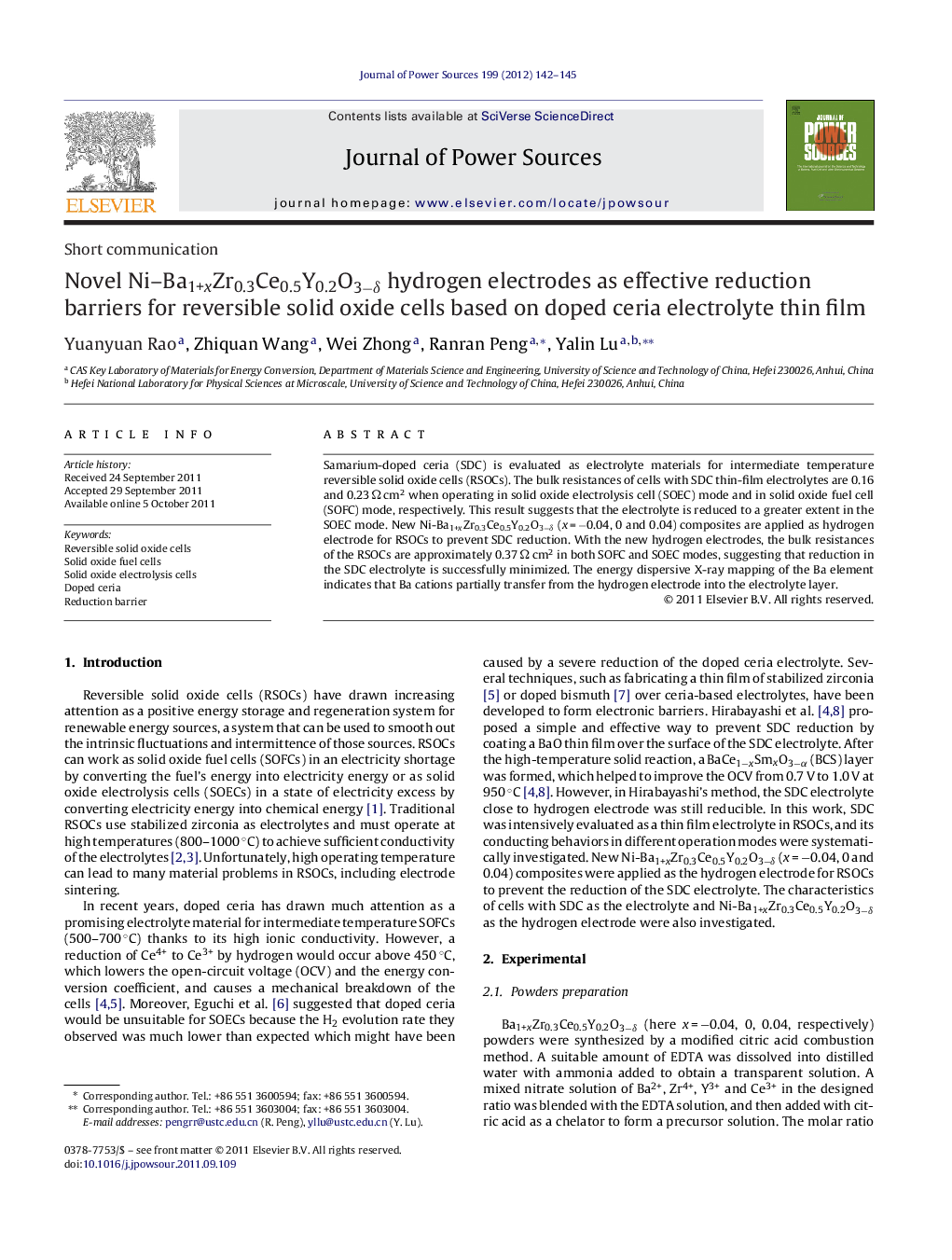| Article ID | Journal | Published Year | Pages | File Type |
|---|---|---|---|---|
| 1284602 | Journal of Power Sources | 2012 | 4 Pages |
Samarium-doped ceria (SDC) is evaluated as electrolyte materials for intermediate temperature reversible solid oxide cells (RSOCs). The bulk resistances of cells with SDC thin-film electrolytes are 0.16 and 0.23 Ω cm2 when operating in solid oxide electrolysis cell (SOEC) mode and in solid oxide fuel cell (SOFC) mode, respectively. This result suggests that the electrolyte is reduced to a greater extent in the SOEC mode. New Ni-Ba1+xZr0.3Ce0.5Y0.2O3−δ (x = −0.04, 0 and 0.04) composites are applied as hydrogen electrode for RSOCs to prevent SDC reduction. With the new hydrogen electrodes, the bulk resistances of the RSOCs are approximately 0.37 Ω cm2 in both SOFC and SOEC modes, suggesting that reduction in the SDC electrolyte is successfully minimized. The energy dispersive X-ray mapping of the Ba element indicates that Ba cations partially transfer from the hydrogen electrode into the electrolyte layer.
► Intensive reduction in doped ceria thin film electrolyte was observed when operating as solid oxide electrolysis cells (SOECs). ► Using new Ni-Ba1+xZr0.3Ce0.5Y0.2O3−δ (BZCY) composites as hydrogen electrodes, reduction of SDC electrolyte has been prevented. ► The polarization resistances of RSOCs increased with Ba content in the Ni-Ba1+xZr0.3Ce0.5Y0.2O3−δ hydrogen electrodes. ► RSOCs with the SDC electrolyte and the Ni-Ba1+xZr0.3Ce0.5Y0.2O3−δ hydrogen electrodes presented good electro-performance.
